Participants: Volodin I.A., Volodina E.V., Frey R.
Funded by Russian Science Foundation (RSF, grant 14-14-00237).
Humans differ from their ancestors, apes and other primates, by their low position of the larynx in the neck a adulthood. Such position of the larynx forms a right-angle bent human pharynx. This enables humans to move the tongue not only up and down, but also forward and back, what determines a possibility to pronounce vary variable vowel sounds. So, the low position of the larynx is considered as one of preadaptations to evolutionary origin of human speech. Although there are no other primates with low larynx position aside humans, among ungulates, there are species, in which the larynx is enlarged, rests low in the neck and in addition is mobile, that is can be retracted down until the sternum at each call. So far, only five such ungulate species are known: red deer, fallow deer, goitred gazelle, impala antelope and Mongolian gazelle. This determines our research interest to studying the vocal behaviour and vocal anatomy of Mongolian gazelles in rut period.
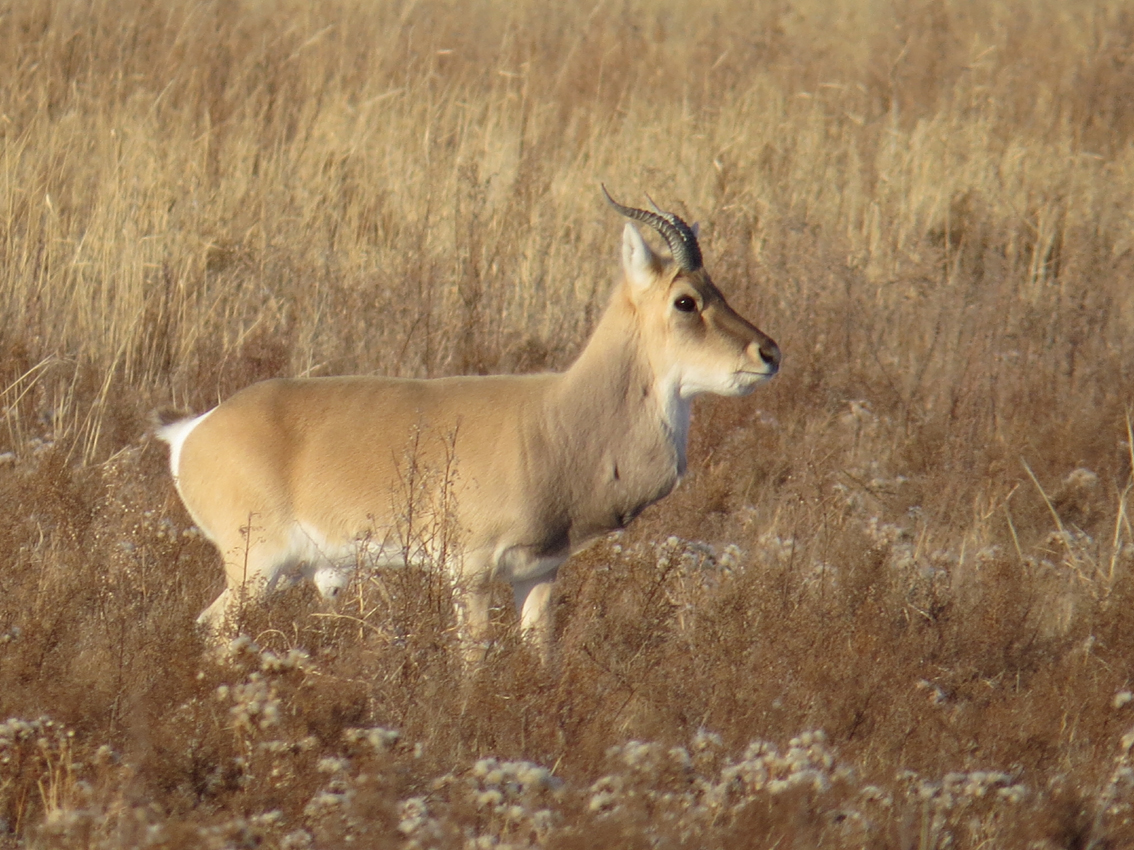
1. Male Mongolian gazelle
Mongolian gazelle is a beautiful antelope, which males have not large but very acute horns and a tremendous larynx, weighing one and half percent of body weight, record among non-flying terrestrial mammals!
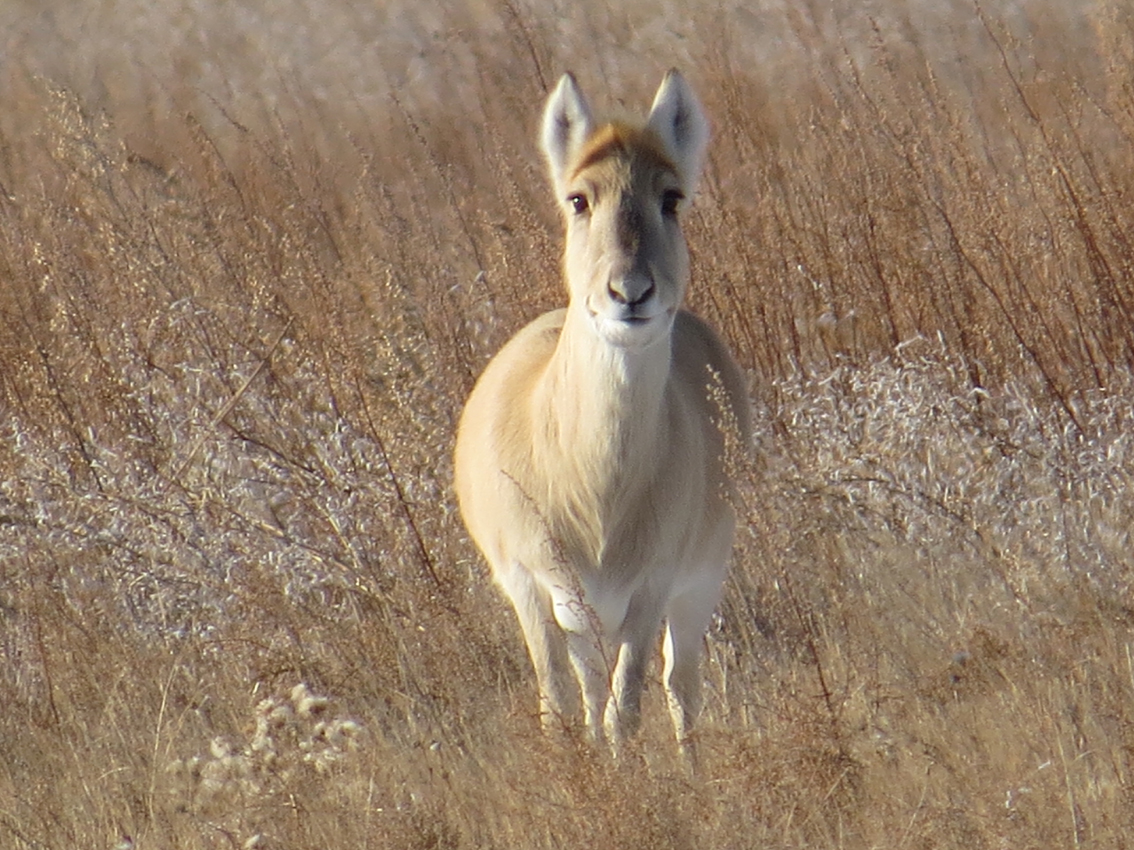
2. Female Mongolian gazelle
Female Mongolian gazelle are much more graceful than males, and bear on their heads a beautiful hat of elongated hair instead of the horns.
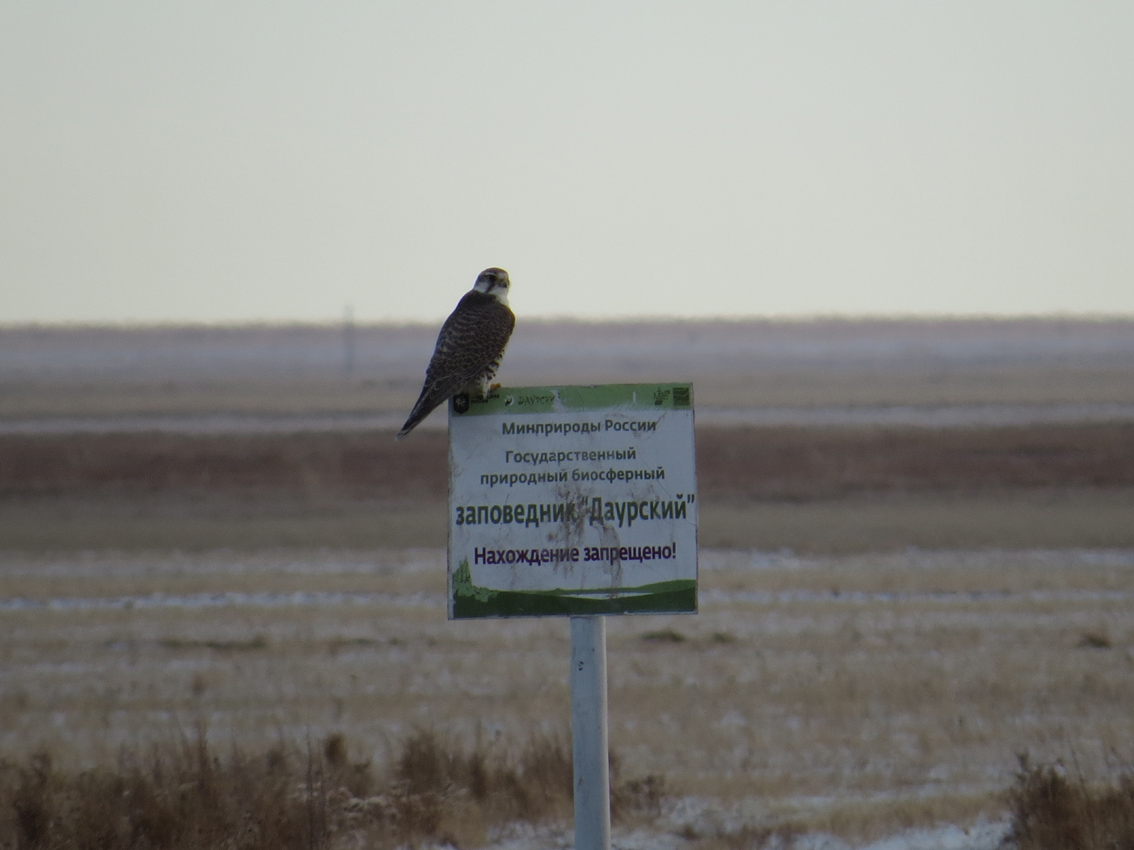
3. Saker falcon on the pointer of the Daurian reserve
Formerly, the northern border of the Mongolian gazelle area passed over southern Altai, Tuva and Transbaikalia. But in XX century, the Mongolian gazelle area shrunk strongly, so nowadays Mongolian gazelles in Russia occur only at the territory of the Daurian reserve.
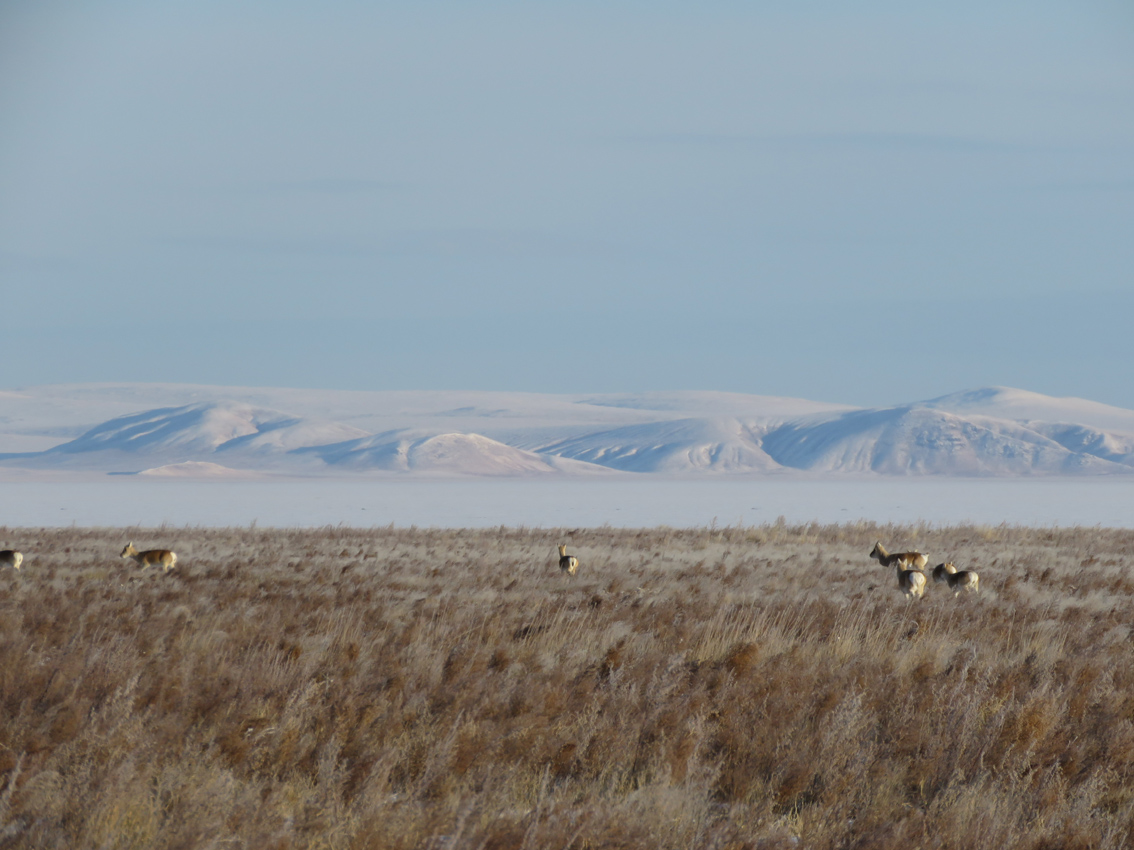
4. The Daurian steppe, lake Zun-Torey
Southern part of the reserve is situated in the Daurian steppe between rivers Onon and Argun, near the latwo largest lakes of Transbaikalia Zun-Torey and Burun-Torey. Zoological researches started here 245 years ago: in 1772 expedition of Peter Simon Pallas worked in the Daurian steppe.
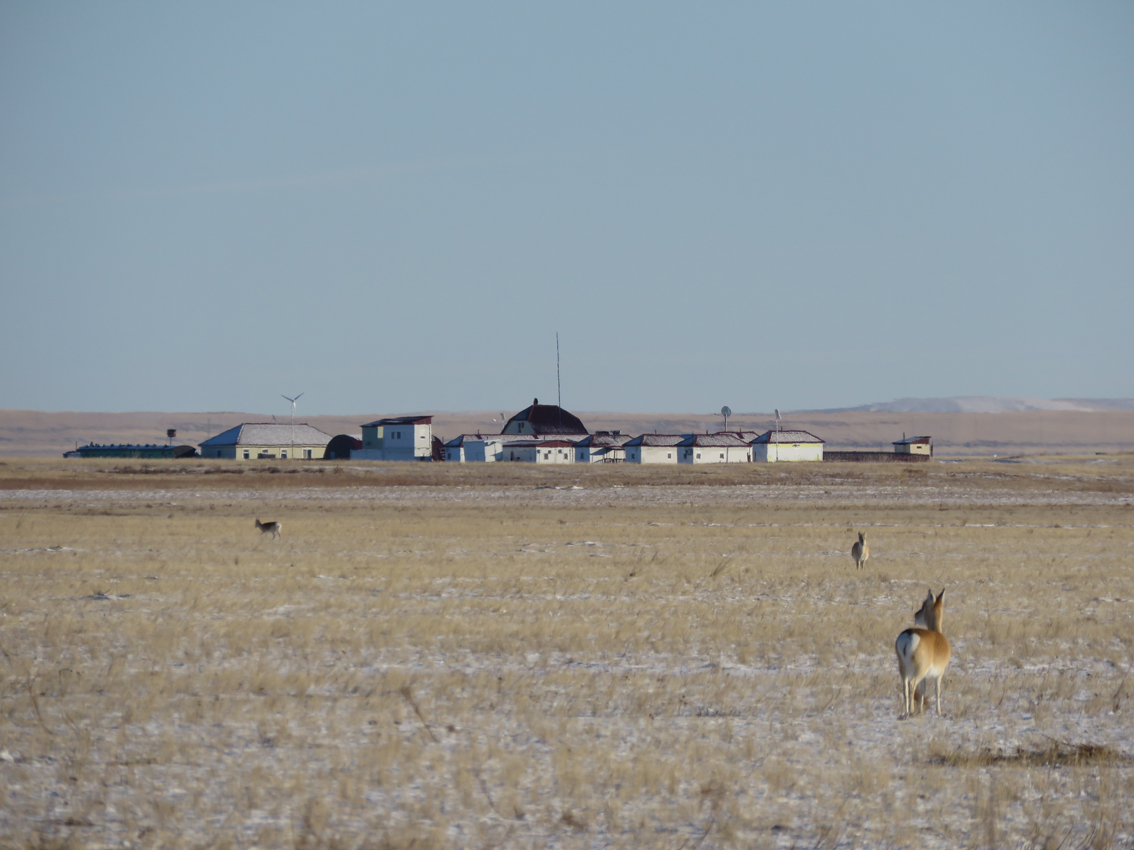
5. Cordon Utochi of the Daurian reserve
Cordon Utochi is our expedition base in the Daurian reserve. The cordon is well-equipped and ecological as all necessary electricity is obtained from the solar panels and wind turbine.
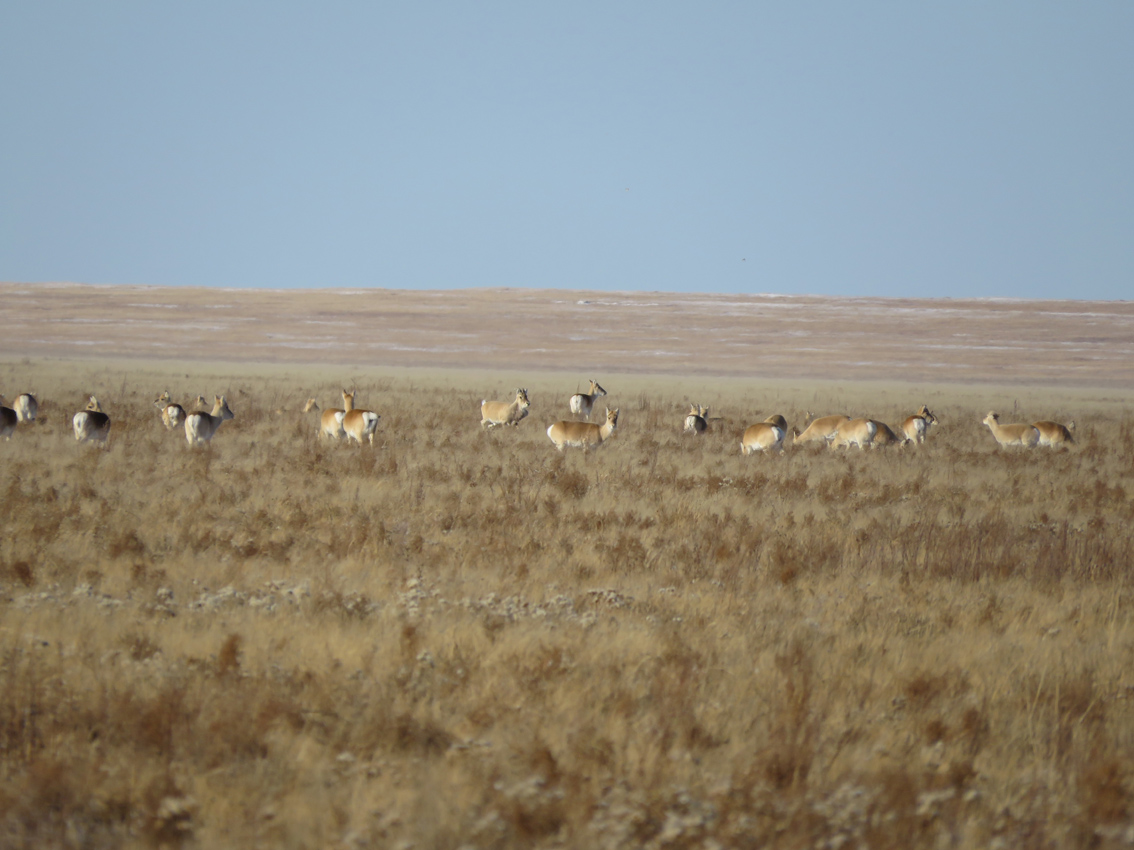
6. Harems of Mongolian gazelles during the rut
In Mongolian gazelles, as in other antelopes, pregnancy comprises about 6 months. As newborns should appear in warm time of the year, the rut occurs in the middle of December.
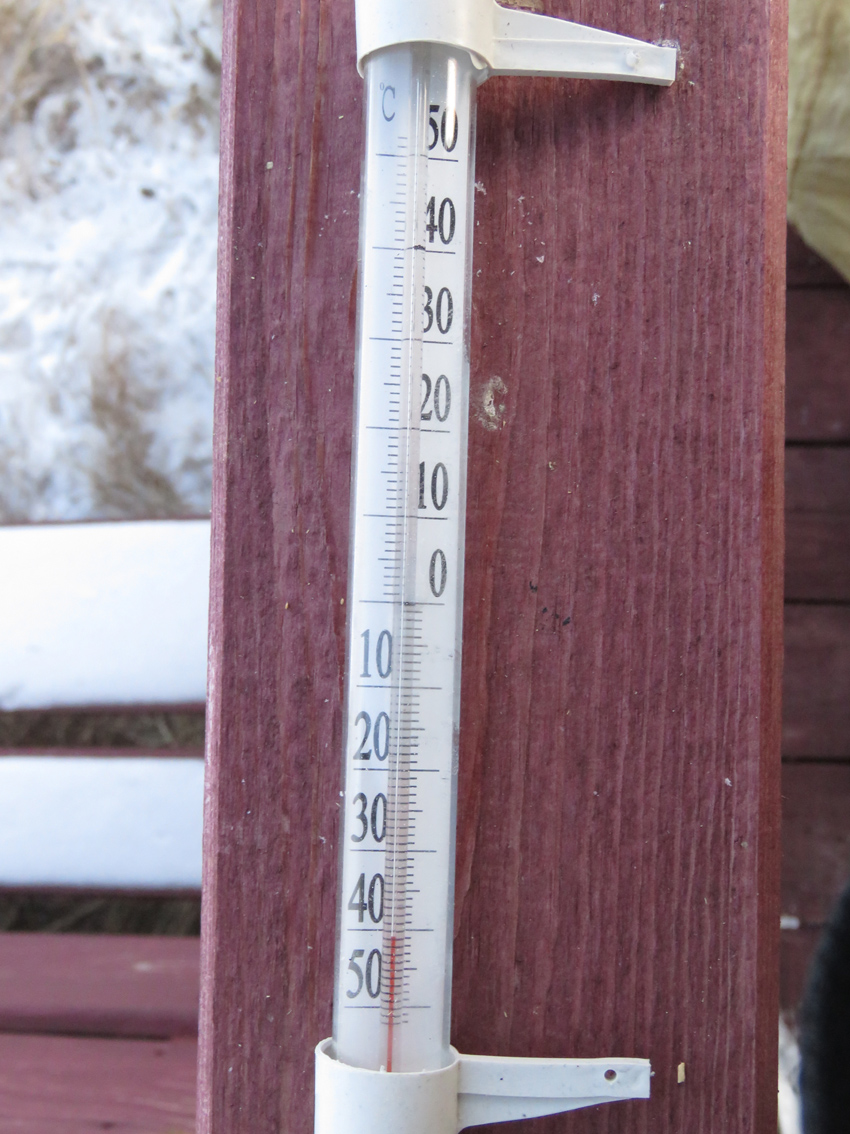
7. Below 40
However in December, temperatures are often below 40 Celsium.

8. Grazing Mongolian gazelles
This is not a problem for the Mongolian gazelles. There is little snow in the steppe, the main forage is dry grass that is higher of the snow cover and it is enough grass for all animals.
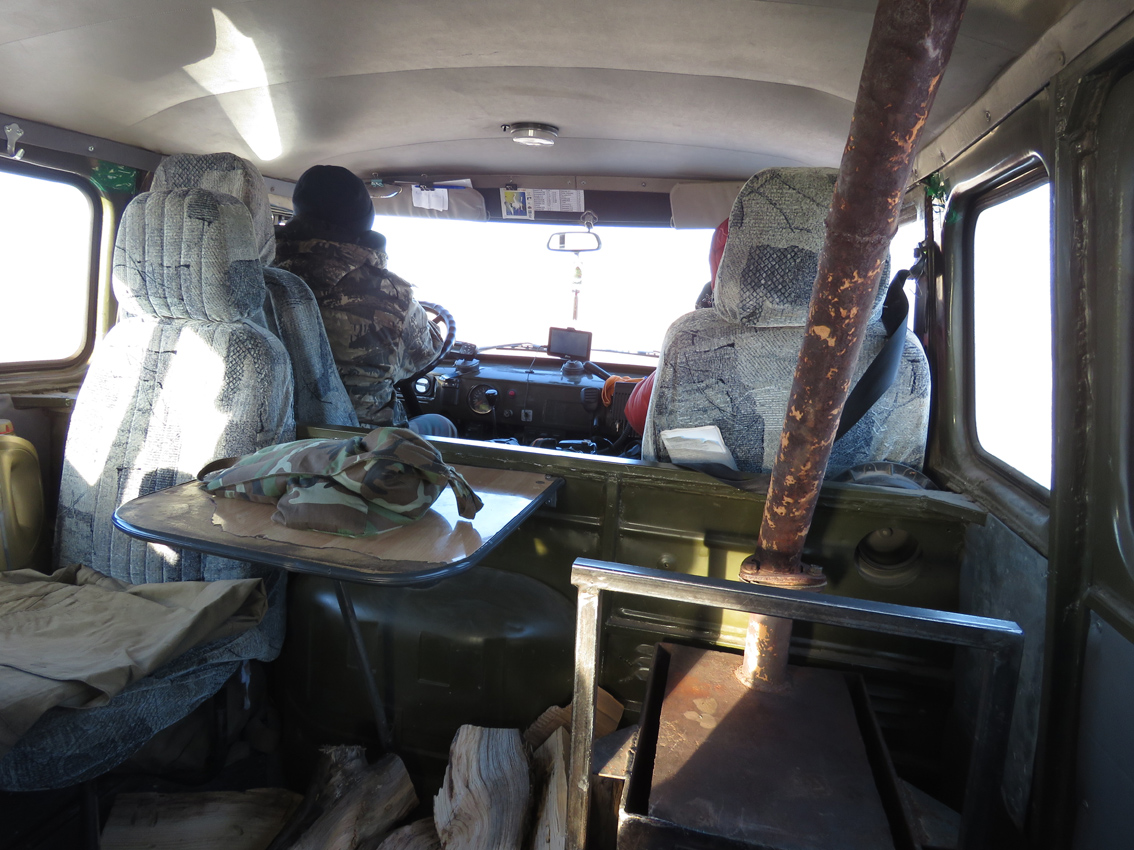
9. Cars of the reserve equipped with wood-heaters
But peoples should cope with such low temperatures. Only at Dauria we observed the ranger cars, crossing the steppes without roads, equipped with iron wood-heaters. Just in case.

10. Mounting the sound trap for recording calls of Mongolian gazelles
We should think how to observe and record sound of the animals at such low temperatures. As the steppe landscape is open, the Mongolian gazelles have a fleeing distance of people and cars of 200-300 m. So we collect calls with songmeters: sound traps that are specially insulated and attached on top of common kitchen stools.

11. Mongolian gazelles in vicinity of the songmeter
Mongolian gazelles do not afraid of songmeters so we collect a lot of high-quality recordings of male and female calls.
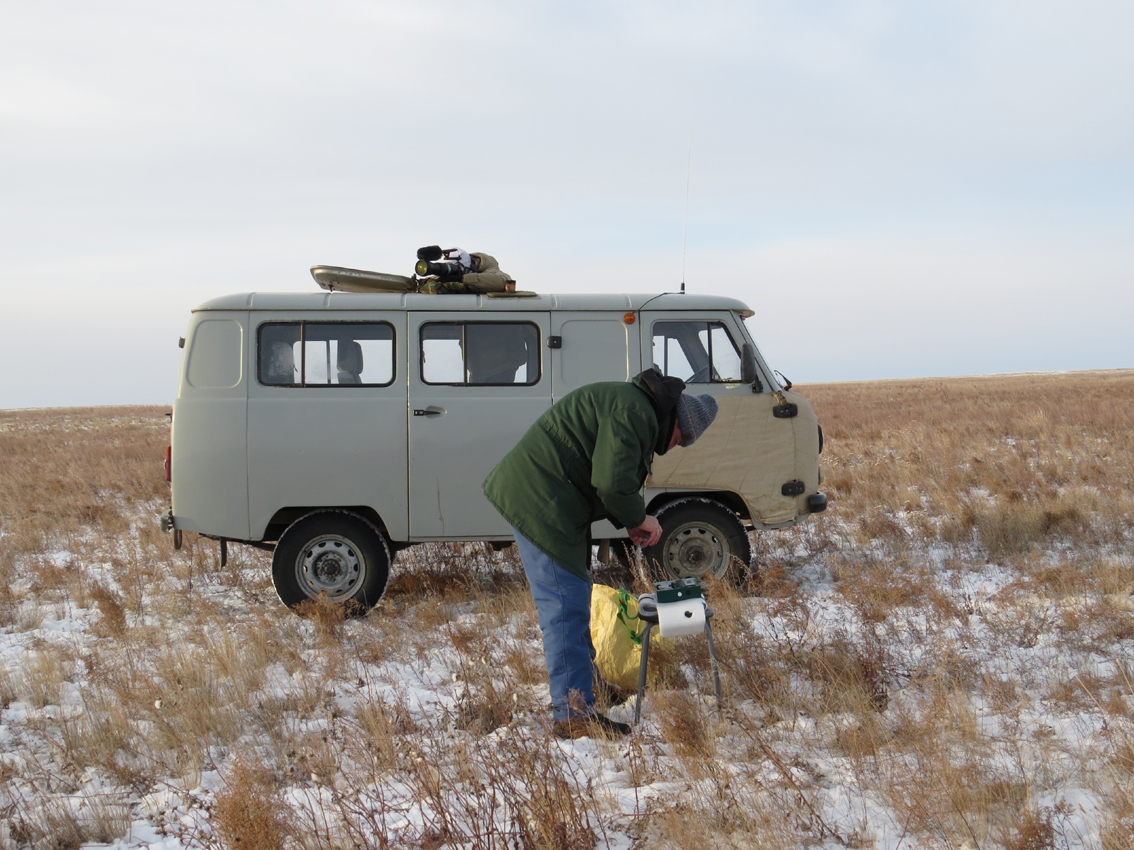
12. Change of batteries in the sound trap
Batteries cannot work in the songmeters at ambient temperatures lower than 25 degrees. So, each day we visit the songmeters and change in them the batteries and cards. Sometimes after a cold night, the batteries freeze to the unit and should be ejected using a screwdriver.
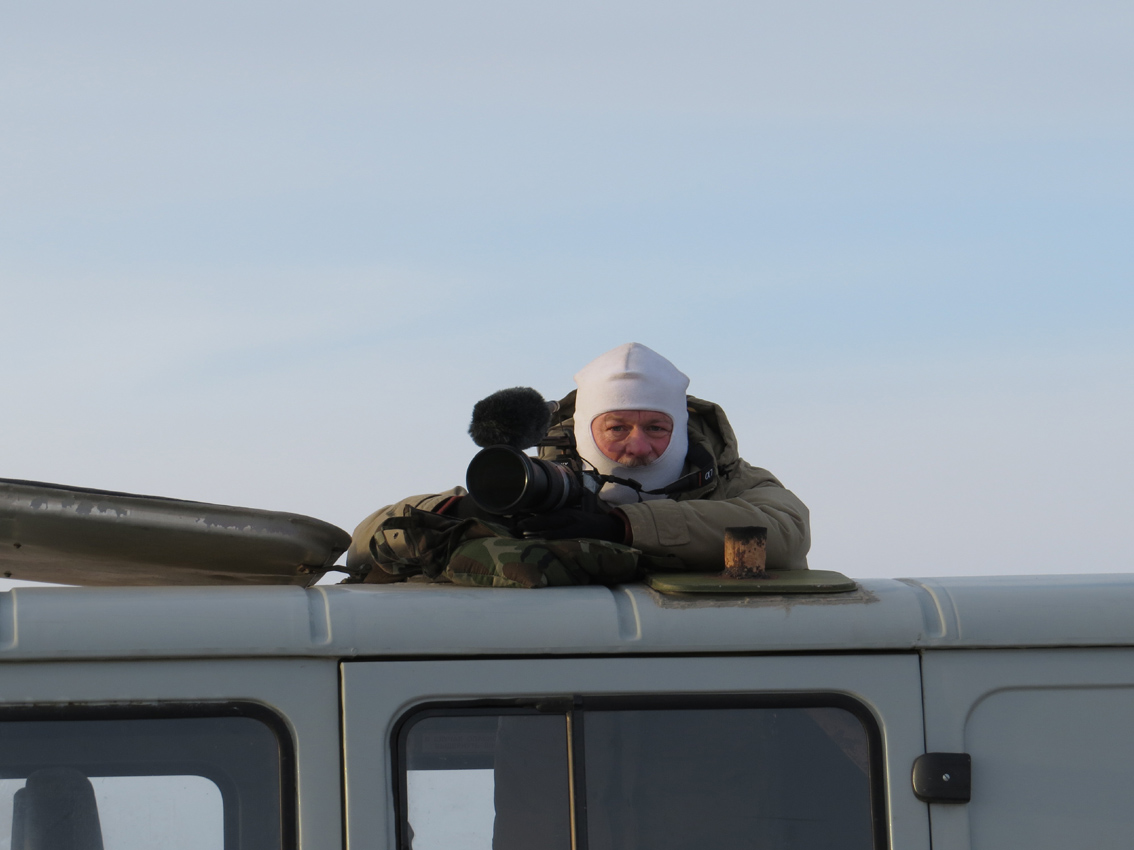
13. Video recording of Mongolian gazelles behaviour from the roof luke of the car
However, video cannot be recorded remotely. So, for video recording of behaviour during the rut we used the roof luke of the car. As Mongolian gazelles are shy, the car is literally crawling to them at speed as low as 3 km/hour (many thanks to our patient drivers!). During recording, the engine doesn’t work, the heater doesn’t burn, so the car steadily freezes.

14. Harem group of Mongolian gazelles
The rut of Mongolian gazelles lasts approximately two weeks. Males occupy territories try to hold groups of females (harems) in vicinity. In harems are only adult females and half-year-old female calves; all male calves are driven away of harems still before the start of the rut.
Video1: Harem group of Mongolian gazelles.
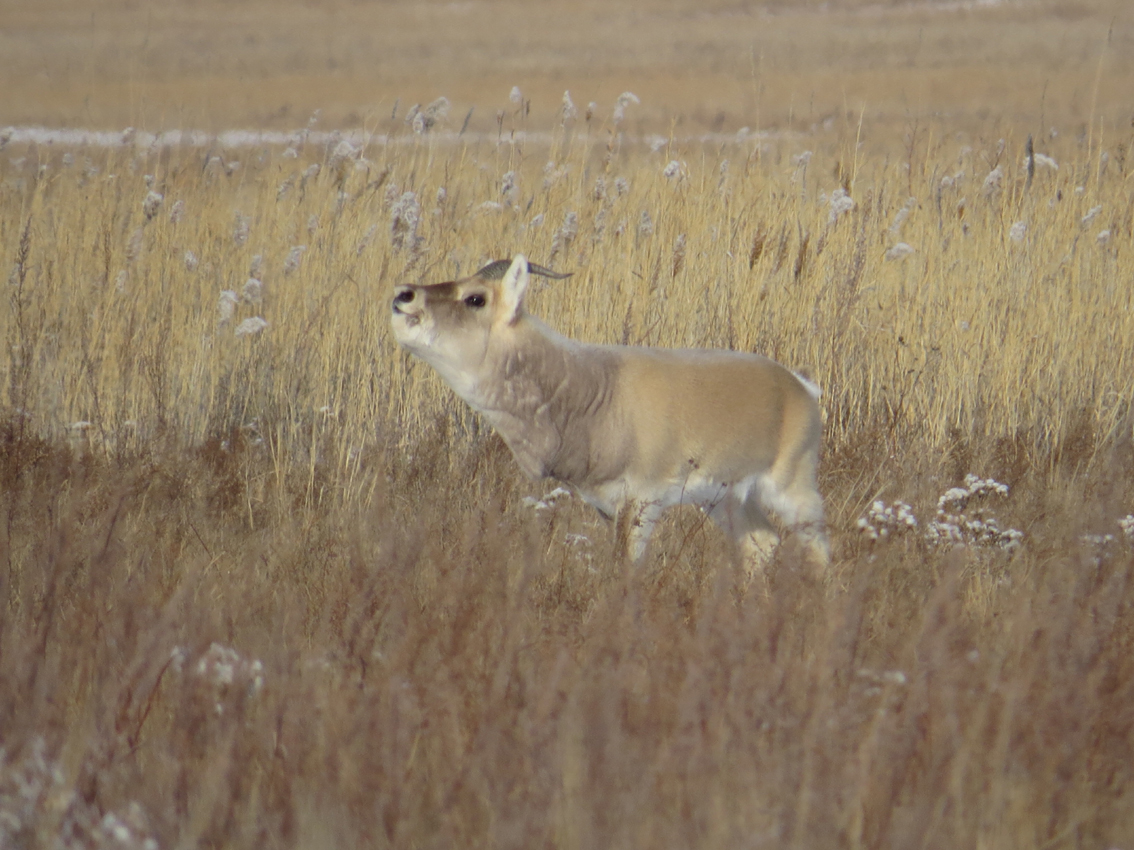
15. Male Mongolian gazelles is calling with larynx retraction down to the sternum
Males not only herd females but also nearly permanently bark, with raising shortly the head up and retracting the larynx down to the sternum. Their short calls are reminiscent of dog barks.Audio1: Male rutting calls.
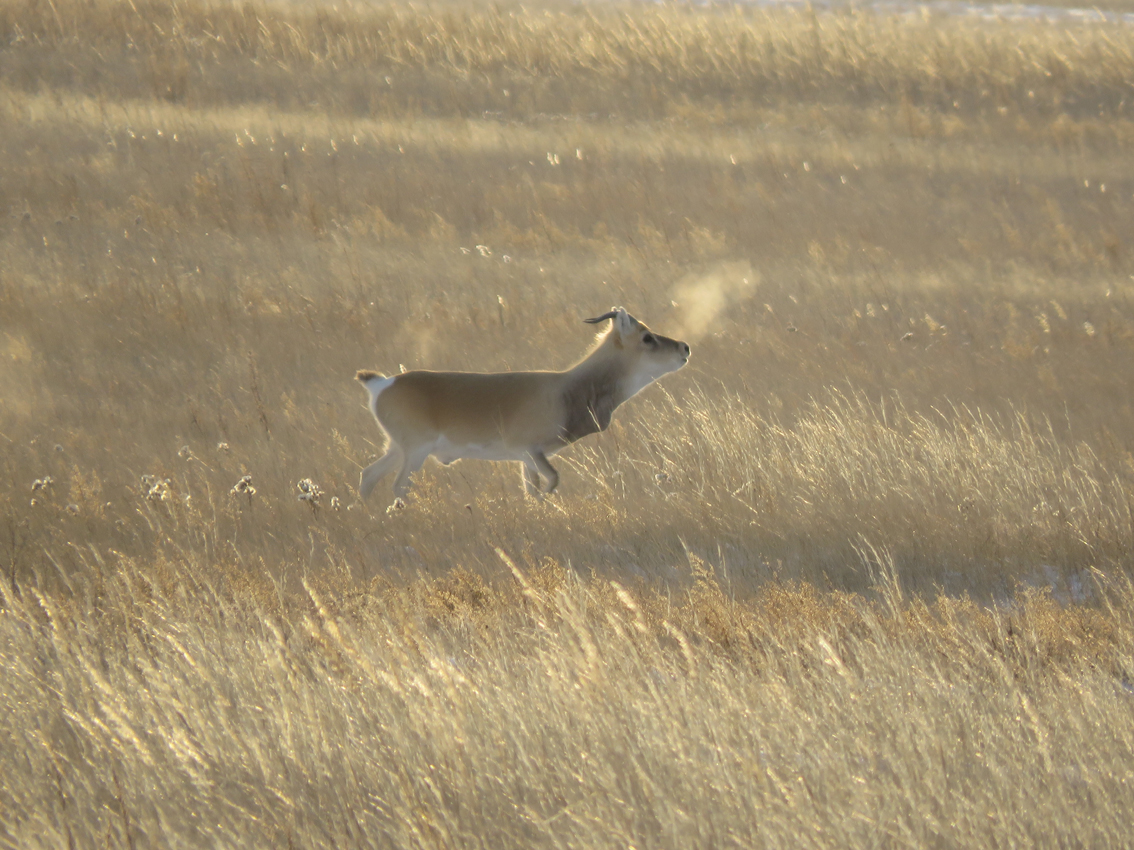
16. Vapor during the calls
When making videos against the sun, the vapor from the mouth during calls is well visible. This helps to establish how males call, through the nose or through the mouth.
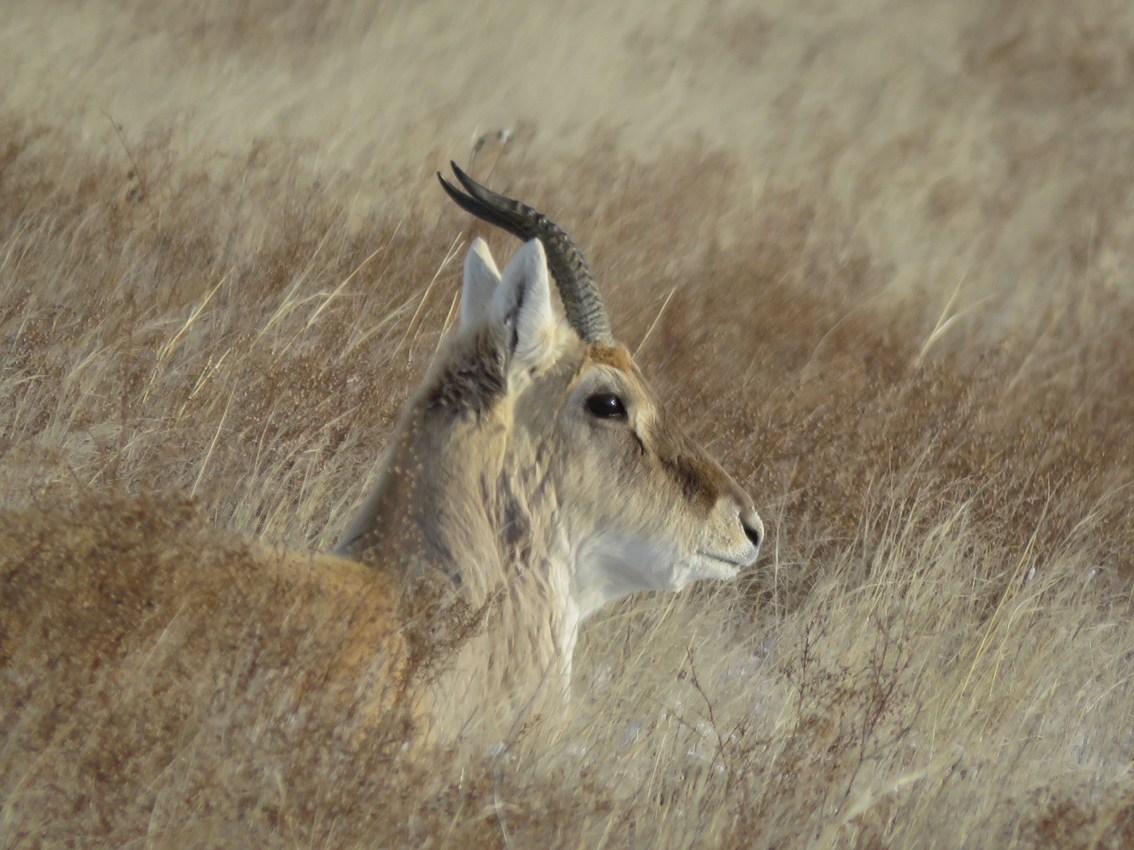
17. Resting male Mongolian gazelle
Males move much, eat little and tight strongly. For rest they lye just in snow. To such tied male, the car can approach close, up to 80 meters, so it is possible to make close-up photos.

18. Female Mongolian gazelles in a harem
Female Mongolian gazelles, in contrast to males, eat much and endless chat to each other. What else to do in a harem! Distinctive to males, female calls are tonal, reminiscent of cat meows.
Audio2: Calls of female Mongolian gazelles
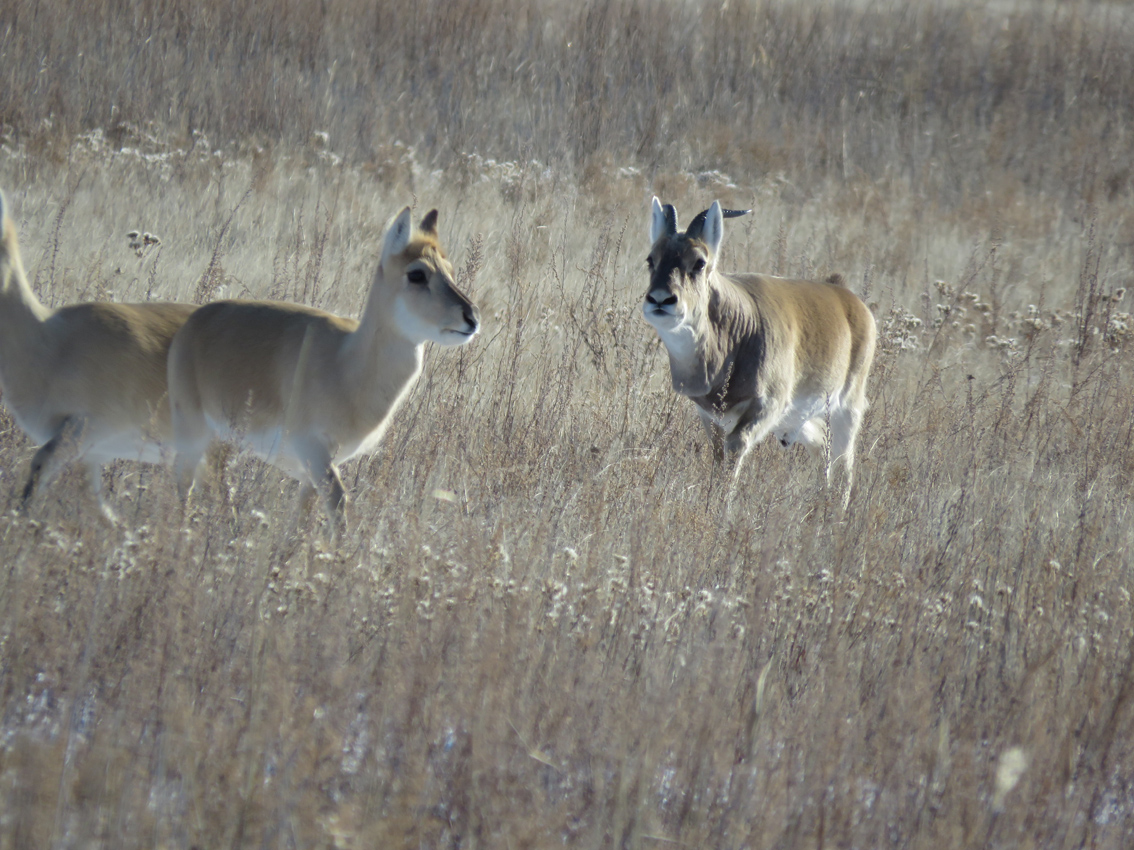
19. Female is escaping from harem
However if a female wants to leave a harem, neither one single male can stop it. Females a lighter and run faster than males. Audio 3: A male is chasing with barks a female, which fleeing from him with loud calls.
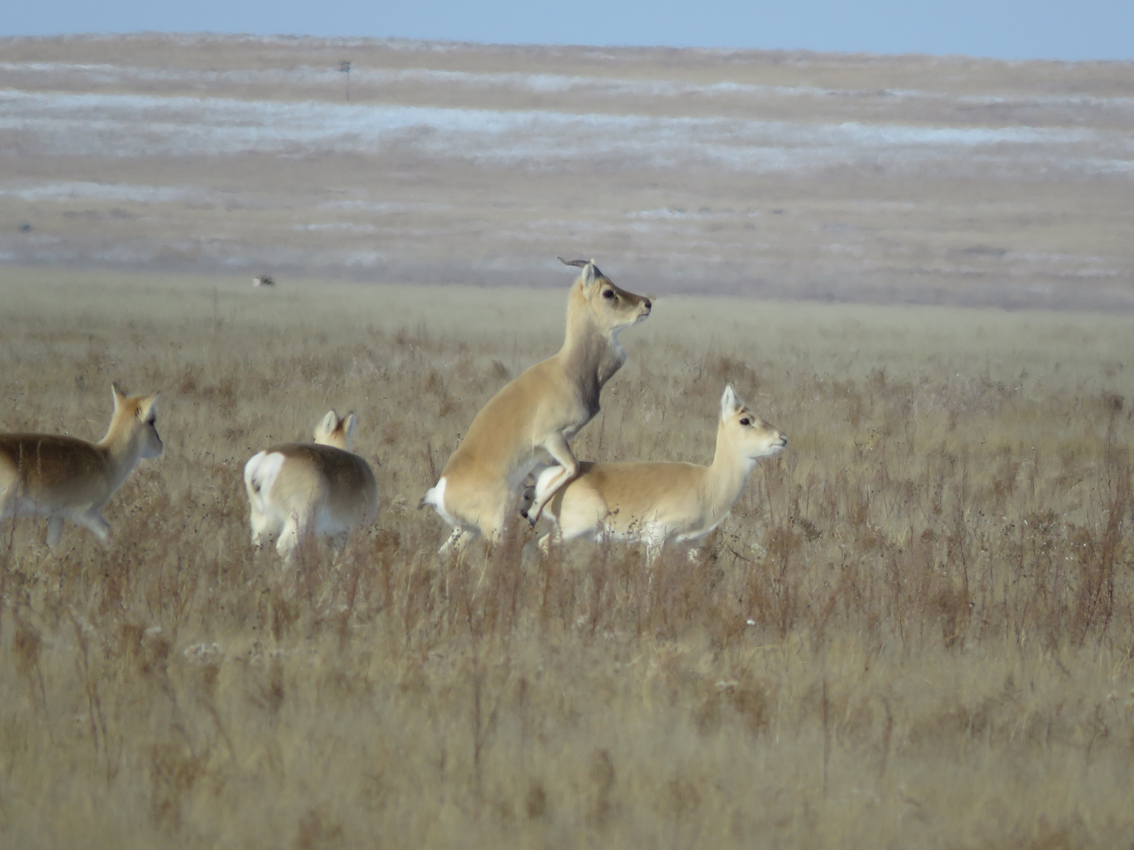
20. Male courting female.
Rut is time of breeding. Females that are ready to mate, attract males with fast movements of their tails. Then starts a beautiful ritual: a male keeping its head high c follows the female, sometimes barks and make attempts of matings. However the successful mating occurs only when the female will stop the movements from the male and freeze.
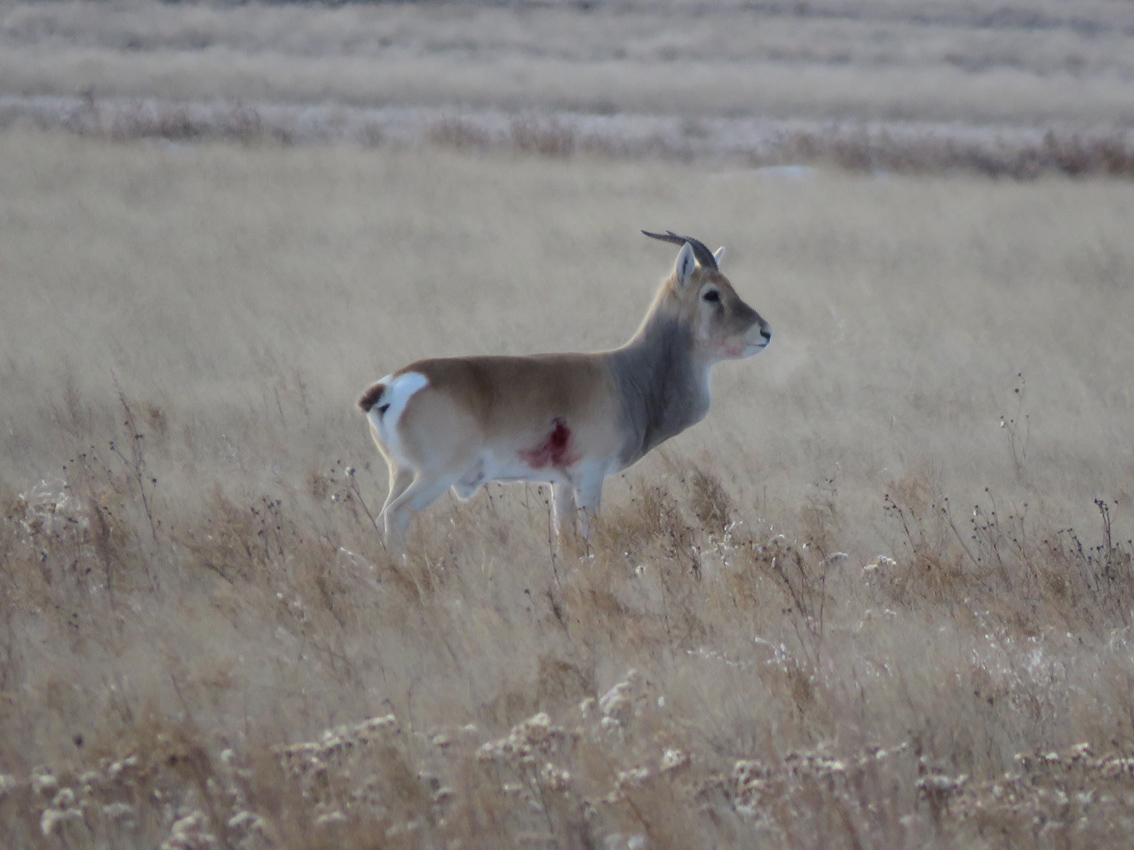
21. Wounded in fight male Mongolian gazelle
In spite of broad steppes, males permanently conflict to each other. Fights are mostly short but sometimes result in strong injuries. Such wounded animals steadily weaken and are becoming a easy victims of golden eagles.
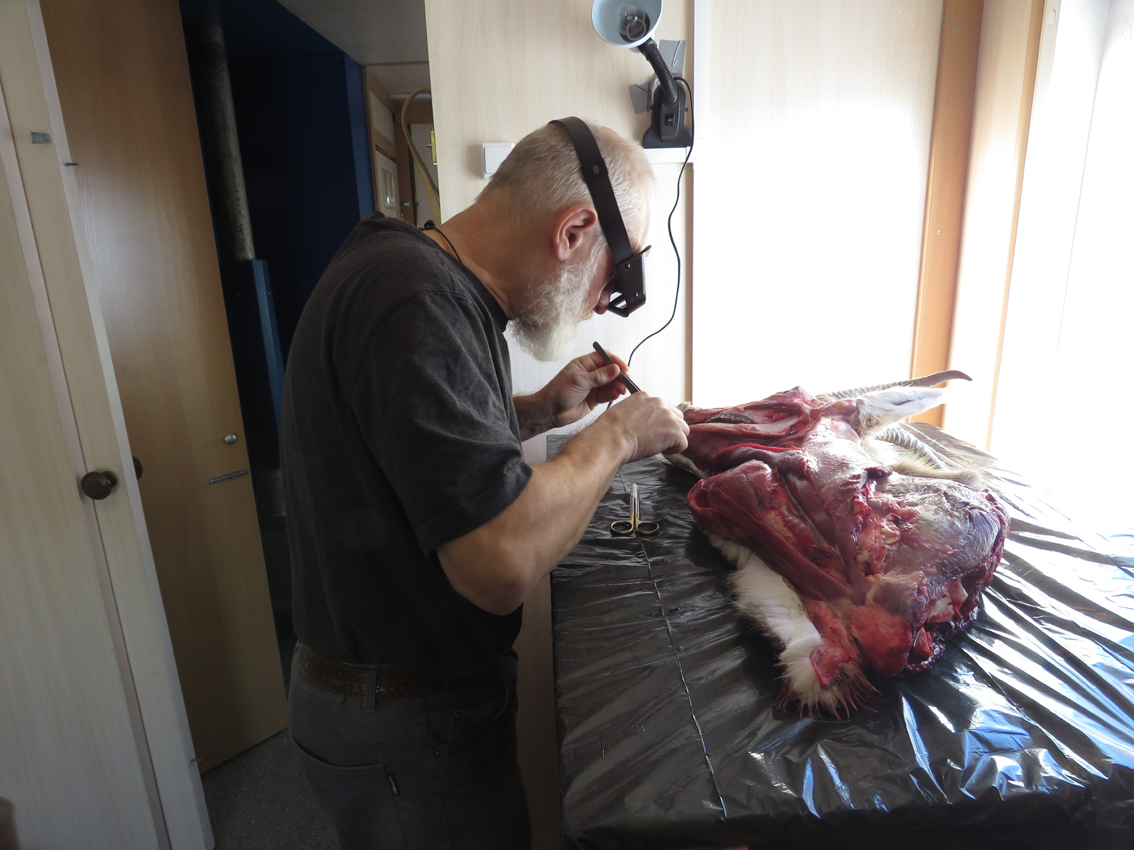
22. Dissection of male Mongolian gazelle vocal apparatus
Rangers of the reserve found one of dead males, and the last three days are devoted to dissection of anatomical structures of vocal apparatus.

23. Sunset over the steppe
The endless steppe is beautiful at any time of day and night. At nights there is so little light that one can see the moon raising up from the line of horizon.
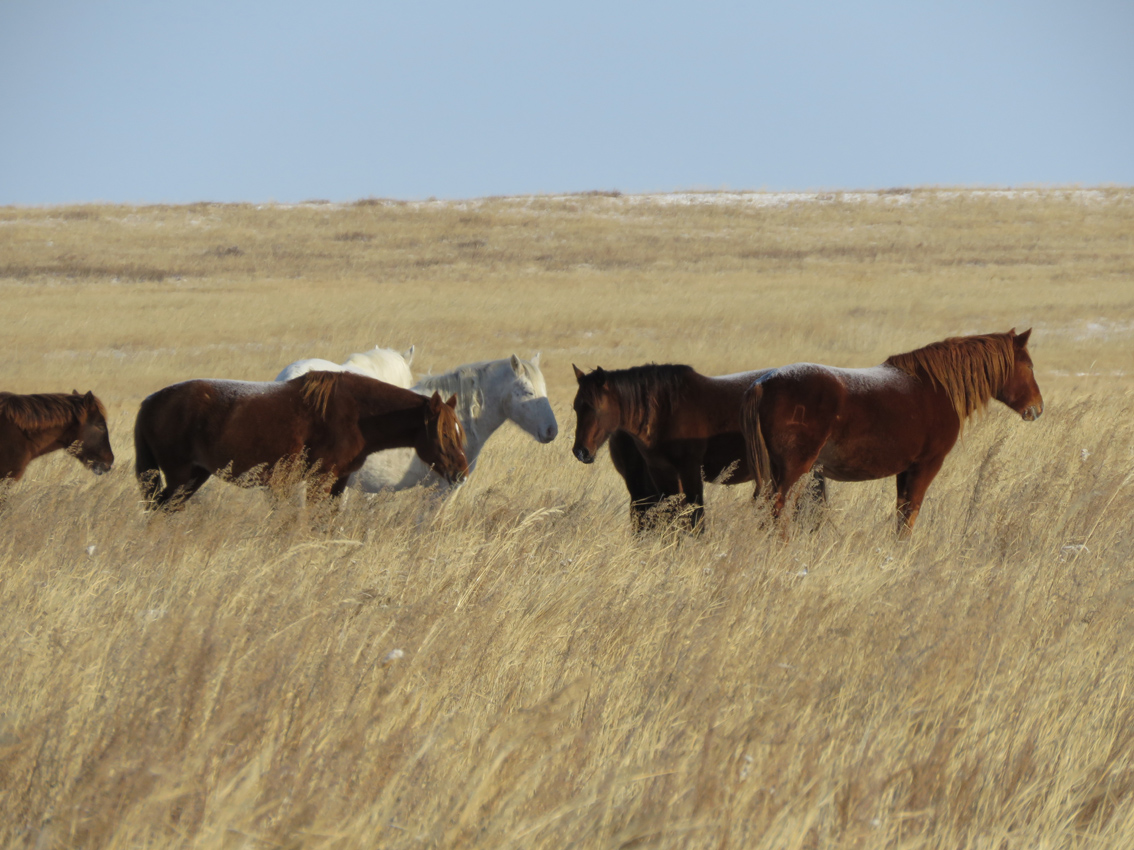
24. Sleeping in the steppe horses
The main business local people is related to livestock. Herds of horses and cows graze in the reserve buffer zone, as was in former times of Hunns and Chingis-Khan.

25. Obo, the sacral place of a spirit-owner
A small hill between the lakes with a wonderful view is the sacral place, Obo. This is an ancient ritual place, where stay the spirits, owners of the locality, remained since times of shamanism. A custom to ornament the Obo with cotton bands of blue or white colours came later from Buddhism.

26. Expedition participants
In spite of the minus 40, we did not freeze out, collected much recordings of calls and video of rutting behaviour, and enjoyed much! Thank to the staff of the Daurian reserve, our trip was wonderfully organized, what allowed to collect good scientific material. |



























